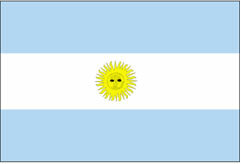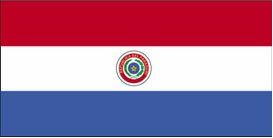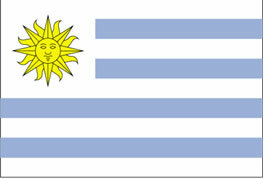Platinum America is a portion of South America made up of three nations: Argentina, Paraguay and Uruguay. The link between these countries dates back to the colonial period, as they already participated in the same political administration. In addition to this aspect, these three nations have another characteristic in common: they are bathed by the rivers that form the River Plate Hydrographic Basin.
With a territorial extension of 3,351,055 square kilometers, Platinum America corresponds to 18% of the South American territory. The relief is characterized by plains and plateaus. To the west, on the border between Argentina and Chile, is located the Andes Mountains. The climate varies according to each region.
In the north, the tropical climate predominates and in the south, the characteristic climate is temperate. The main rivers are: Paraná, Paraguay and Uruguay, forming the River Plate Hydrographic Basin.
These three countries have approximately 50 million inhabitants, with Argentina being the most populous country – with 40 million. The majority of the population of Platinum America, especially Argentina and Uruguay, is white and of European origin. This fact is explained by the intense migratory flow of Spaniards and Italians to these two countries in the late nineteenth and early twentieth century. In Paraguay the mestizos and Amerindians predominate.
The economy in Platinum America is very dynamic and diversified. All three countries have in agriculture, an important element of the economy. In Argentina, wheat cultivation and cattle and sheep farming stand out. In Uruguay, in the domain of the pampas, there is the creation of cattle, production of meat and sheep, in addition to the cultivation of corn and wheat. Paraguay's main agricultural areas are located east of the Paraguay River, where various products are grown, mainly cotton and soybeans.
Argentina is the most industrialized nation in Platinum America. The industry is concentrated in Buenos Aires, Córdoba and Rosario. Montevideo, capital of Uruguay, is home to most industries in the country, whose sector is based on food and textile production.
Paraguay has a very limited industrialization, relying on food production for excellence.
Tourism is another element of fundamental importance to the economy of these three countries. Argentina, Paraguay and Uruguay, together with Brazil, form the most expressive economic bloc in South America – the Southern Common Market (MERCOSUR).
Data from the countries of Platinum America:
Argentina

Area: 2,766,889 km².
Population: 40,276,376 inhabitants
Urban population: 92%
Demographic density: 14.5 inhab./km².
Spanish language
Currency: Argentine Peso
Capital: Buenos Aires
Life expectancy: 75 years
HDI: 0.775
GDP: 328.4 billion dollars.
Do not stop now... There's more after the advertising ;)
Paraguay
Area: 406,752 km².
Population: 6,348,917 inhabitants
Urban population: 61%
Demographic density: 15.6 inhab./km².
Language: Spanish and Guarani
Currency: Guarani
Capital: Assumption
Life expectancy: 71.5 years
HDI: 0.640
GDP: 16 billion dollars
Uruguay 
Area: 177,414 km².
Population: 3,360,854 inhabitants
Urban population: 92.5%
Demographic density: 19 inhab./km².
Spanish language
Currency: Uruguayan Peso
Capital: Montevideo
Life expectancy: 76 years
HDI: 0.765
GDP: 32.2 billion dollars.
By Wagner de Cerqueira and Francisco
Graduated in Geography
Brazil School Team
America - continents - geography - Brazil School
Would you like to reference this text in a school or academic work? Look:
FRANCISCO, Wagner de Cerqueira e. "Platinum America"; Brazil School. Available in: https://brasilescola.uol.com.br/geografia/america-platina.htm. Accessed on June 27, 2021.

